I make my sales pitch to a 72-year-old farmer as he pushes his whole arm up each cow’s anus to check their pregnancy status. It’s 110 degrees out.
More than a decade of molecular biology research has led me to a farm in the middle of the desert. It’s not anywhere I thought I’d end up, but it turns out dairy cows are fantastic for translating all the new information emerging from the field of host-associated microbiomes.
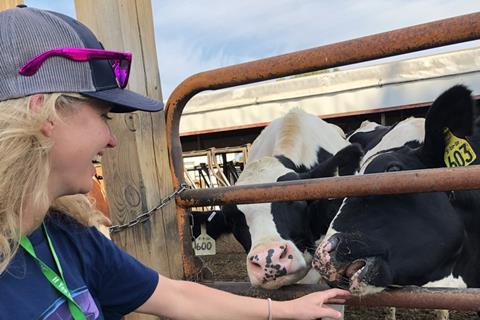
During my PhD, I primarily researched microbiome methods development. Eager to apply this science to the real world, I was intrigued when I heard about Native Microbials. They identify, isolate, and preserve key microorganisms from livestock and pets to create next-generation probiotics. Because we can get daily milk measurements, dairy cows are particularly suited to test the ability of native microbes to improve the animal’s efficiency at converting feed into milk.
My role in the company revolves around designing trials to evaluate and interpret the effect of our product, both in controlled academic settings and on commercial dairy farms. I work closely with our sales team to help translate science to the field and, crucially, bring the farm perspective back to the science team. This means each workday is very different, but it typically falls into one of several categories.
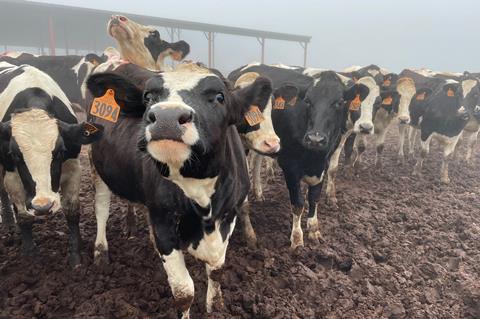
The first, and most familiar to me, is writing grants and academic papers. We collaborate with universities across the US to run controlled trials and apply for funding to test new ideas. The biggest difference is that cows are a lot bigger and more expensive than petri dishes or mice, so controlled experiments are more expensive and fewer and farther between.
The other, still new to me, is interacting with commercial dairy farmers and their consultants. Some days, my job entails drinking beer with third generation Californian farmers, trying to better understand where we can harness advances in microbiology to improve their efficiency.
On others, I’ll perch my laptop on the back of a tractor while showing data to potential clients. One farmer, upon hearing my credentials, said that to him “PhD” meant “probably hasn’t done it”. And while he was right that I hadn’t worked outside academia, I had spent years researching the interaction between microbiomes and host physiology and was bringing him technological advances that improve his bottom line. Today he is one of our longest and most loyal customers.
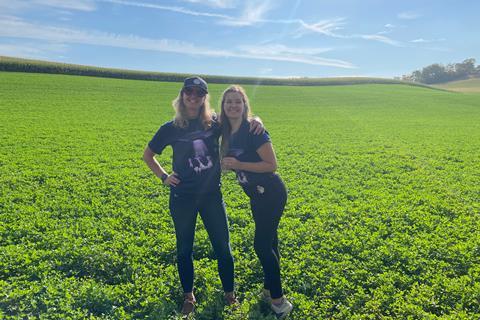
Perhaps the most difficult part of my job is searching for meaning in the messy noise of milk production data. Even in controlled academic trials, where a cow is in her lactation cycle, how many calves she’s birthed, what season it is, and what type of food she consumes all have huge impacts on milk production that must be carefully controlled for. When applying these results to trials on commercial farms, with hundreds or even thousands of cows per group, defining the null hypothesis (ie. what the cows would have produced without treatment) can become nearly impossible.
In the commercial setting, the pressure to call your shot is real, and forces careful, collaborative data science on a short time-scale. This is stressful (being wrong means losing out on both trust and money), but is also more meaningful than the methods development work I used to do. It’s thrilling to make a positive impact at the large scale on animal health and efficiency while turning a profit both for the company and the farmer.
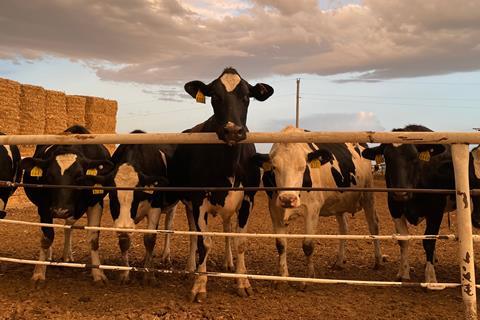
Working with a group to bring a product to market obliges me to rely on others (eg. I rely on our process development team to create the product and provide accurate data on its stability in field conditions) and in turn makes others rely on me (eg. the sales team relies on me to accurately translate our findings to concrete outcomes for farmers). Communicating across disciplines effectively is no easy task and can be both frustrating and rewarding.
Bridging the farm-to-science gap includes traversing large geographic barriers, so I spend a lot of time in cars and on planes. On average, I spend at least one night in another town two weeks out of the month.
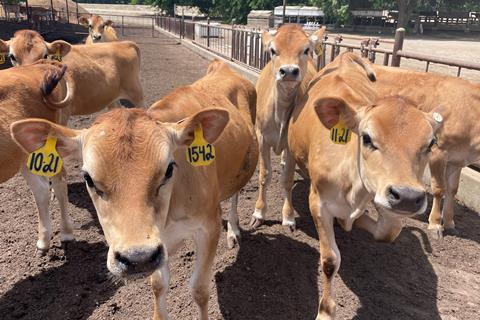
Spending so much time on the road has taught me to find the little pleasures, like which hotels in the Central Valley have a Peloton, how to find good espresso even along the loneliest highway, and has taken me to some beautiful parts of the country that I would have otherwise never visited. Climbing out of the work F-150 after a day on the farm and jumping into my Prius for the final drive home is still a bit jarring, but my job is frequently one of surprising juxtapositions.
Leaving the bench and the lecture hall for the bustling world of a quickly growing start-up and the vast expanse of rural farms has been a rollercoaster of experiences and emotions.
I am grateful to have the opportunity to learn a new field from scratch and obtain a broader understanding of just how dairy products reach our tables, which is something I and many people I know had never deeply considered before. My venture into industry has made me appreciate how microbiology touches on all aspects of our life, society, and culture, and how important it is to push this field forward.




No comments yet